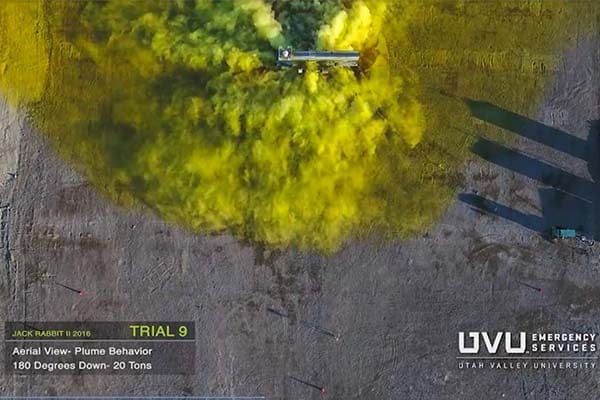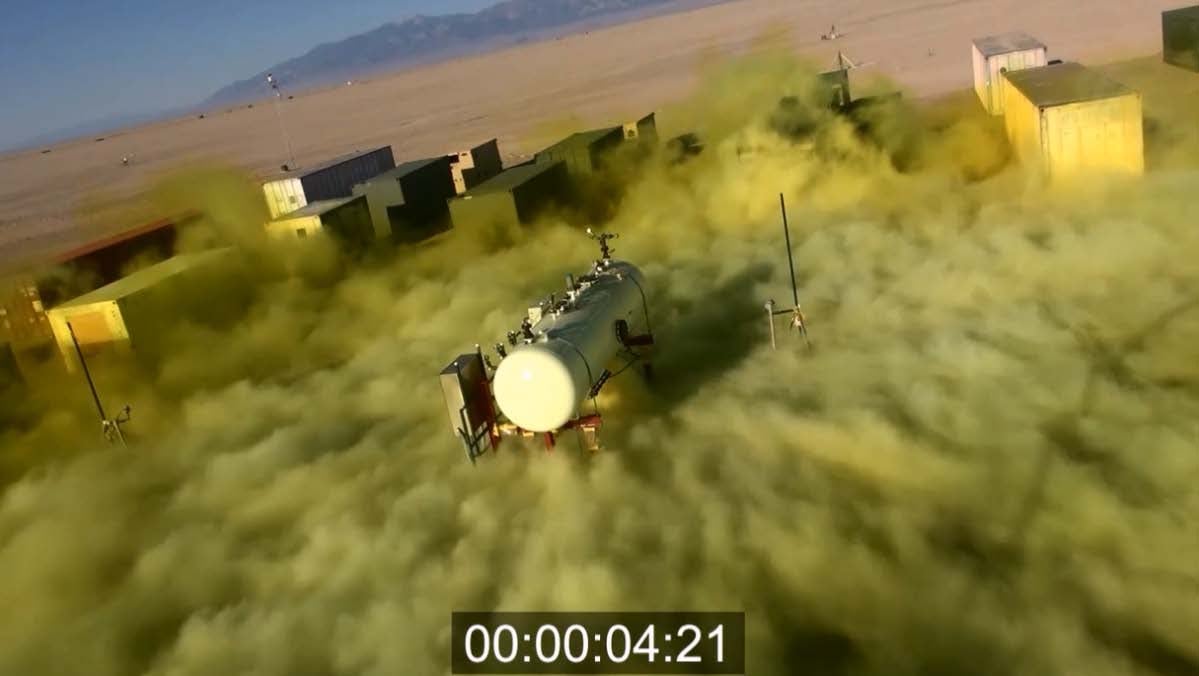A report on test releases of liquefied compressed chlorine was published on Sept. 30 by Utah Valley University (UVU).
Known as the “Jack Rabbit Project,” the multi-agency chlorine release experiments were conducted in part to help emergency responders meet the planning, tactical and operational challenges of a catastrophic Toxic Inhalation Hazard (TIH) release.
Staff from the U.S. Fire Administration’s National Fire Academy (NFA) participated in the project to identify training gaps and opportunities that the NFA’s hazardous materials curriculum can meet.
Project findings
The Jack Rabbit Project’s scientific approach included emergency response objectives.
Their inclusion allowed subject matter experts to validate long-practiced hazardous materials response strategies and tactics.
Findings related to the emergency response objectives of the Jack Rabbit Project include:
- The 2016 Emergency Response Guidebook (ERG) isolation and public protective action distances are consistent with Jack Rabbit data.
- Sheltering in place is the best option if evacuation isn’t possible.
- Vehicles remained operational after exposure to high concentrations of chlorine. A lateral-to-the-wind escape from a chlorine plume is the best option for responders in vehicles.
- Electronics operated after exposure but long-term operability was inconsistent.
- Common urban materials were not greatly affected but heavy hydrocarbons dissolved and metal surfaces were immediately corroded.
- Photo Ionization Detectors with 11.7eV bulbs detected chlorine with reasonable accuracy.
- Predictive plume models are best used as planning/forecasting tools and not as emergency response tools.
- A risk-based response process that considers the container, stress/breach release, wind, exposures, and environmental conditions is critical to responder safety.
Aerial view of the plume behavior

Emergency responders need to base their planning and response decisions on facts, science and incident circumstances.
For that reason, the authors of the report stated that it is important to involve the emergency response community in the planning and execution of future hazardous materials release research.
Project background
The Jack Rabbit Project test program began in 2010.
The U.S. Department of Homeland Security’s Transportation Security Administration wanted to better understand the impact on communities of a large release (60 to 90 tons) of TIH gases (chlorine and anhydrous ammonia) from a rail car.
The project was divided into two phases — Jack Rabbit I and Jack Rabbit II — and a series of tests occurred between 2010 and 2016.













 Jack Rabbit Project chlorine test release in progress. (Image courtesy of The
Jack Rabbit Project chlorine test release in progress. (Image courtesy of The


